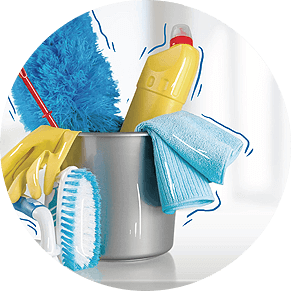


The difference between a surface that looks clean and a truly clean one is significant when it comes to cleaning.
The difference between a surface that looks clean and a truly clean one is significant when it comes to cleaning. Harmful germs and bacteria, such as E. coli, MRSA, and the flu virus, can thrive in even the most well-kept environments if not properly dealt with, leading to potential health risks for the occupants. Professional cleaning services go beyond aesthetics to ensure that spaces are spotless, sanitary, and safe. Understanding the science behind cleaning is key to grasping why professional services effectively eliminate these germs and bacteria—much more so than common DIY cleaning methods.
The Science of Germ Elimination
Germs and bacteria are invisible to the naked eye, so it’s easy to underestimate their presence. These microorganisms can linger on surfaces, carpets, in the air, and even in upholstery. While regular household cleaning products can remove some surface dirt, many germs require specific methods and disinfectants to be fully eradicated.
Here are some of the methods professionals use that go beyond standard cleaning practices:
Professional cleaners often use hospital-grade disinfectants to kill a wide spectrum of bacteria, viruses, and fungi. These cleaning agents are far more powerful than what you can find at your local store. They contain active ingredients such as quaternary ammonium compounds (quats), sodium hypochlorite (bleach), and hydrogen peroxide that effectively break down cell walls of germs, killing them on contact.
For instance, high-touch surfaces such as doorknobs, light switches, and countertops can harbor pathogens like E. coli, MRSA, and even the flu virus. Disinfectants used by professionals are tested to ensure they meet EPA standards for eliminating these threats, providing peace of mind that space is truly sanitized.
Steam cleaning is a powerful alternative for professional use for areas that cannot tolerate harsh chemicals or for people with sensitivities. Steam cleaning uses high temperatures (usually over 200°F) to kill germs and bacteria on a molecular level. The extreme heat breaks down the proteins in bacterial cells, effectively killing them without chemicals.
In residential and commercial spaces, steam cleaning is especially effective for carpets, upholstery, and other fabrics where bacteria can hide deep within fibers. Steam can penetrate these materials better than conventional cleaning products, reaching areas that are typically missed by DIY efforts.
Electrostatic spraying and fogging technologies have become increasingly popular for efficiently disinfecting large areas. This method involves spraying a fine mist of electrostatically charged disinfectant, meaning the particles cling to surfaces more effectively.
The charged droplets are attracted to surfaces and objects like magnets, wrapping around hard-to-reach areas to ensure even coverage. This method is highly effective in commercial spaces, such as offices, schools, and gyms, where ensuring all surfaces are sanitized can be challenging.
Airborne germs are a serious concern, especially in commercial spaces with much foot traffic. High-efficiency particle air (HEPA) filters, used by many professional cleaning services, are designed to capture particles as small as 0.3 microns, including dust, allergens, and many bacteria and viruses.
Professionals using HEPA filter vacuums can remove significant harmful particles from the air, making the environment cleaner and healthier to breathe. In commercial settings like hospitals and offices, these filters help reduce the spread of airborne illnesses and improve indoor air quality.
Ultraviolet (UV-C) light is another advanced method professionals use to combat germs and bacteria. UV-C light penetrates the cell walls of microorganisms, damaging their DNA and rendering them unable to replicate. This technology is commonly used in medical settings but is increasingly adopted in residential and commercial cleaning areas like bathrooms, kitchens, and other high-germ environments.
Why DIY Cleaning Falls Short
While regular cleaning and tidying can help maintain a baseline of cleanliness, DIY methods often fall short when truly disinfecting spaces. Common household cleaners are generally not designed to kill all types of harmful microorganisms. Additionally, many people lack the time or knowledge to clean as thoroughly as necessary to eliminate germs. Without professional-grade equipment, products, and training, it’s easy to miss areas where bacteria and viruses may hide.
Conclusion: The Value of Professional Cleaning
The science of cleaning is more complex than most people realize. With their expertise, equipment, and disinfectants, professionals are well-equipped to tackle germs and bacteria effectively. Advanced methods like hospital-grade disinfectants, steam cleaning and UV-C light go beyond surface-level cleaning to ensure sanitized spaces.
